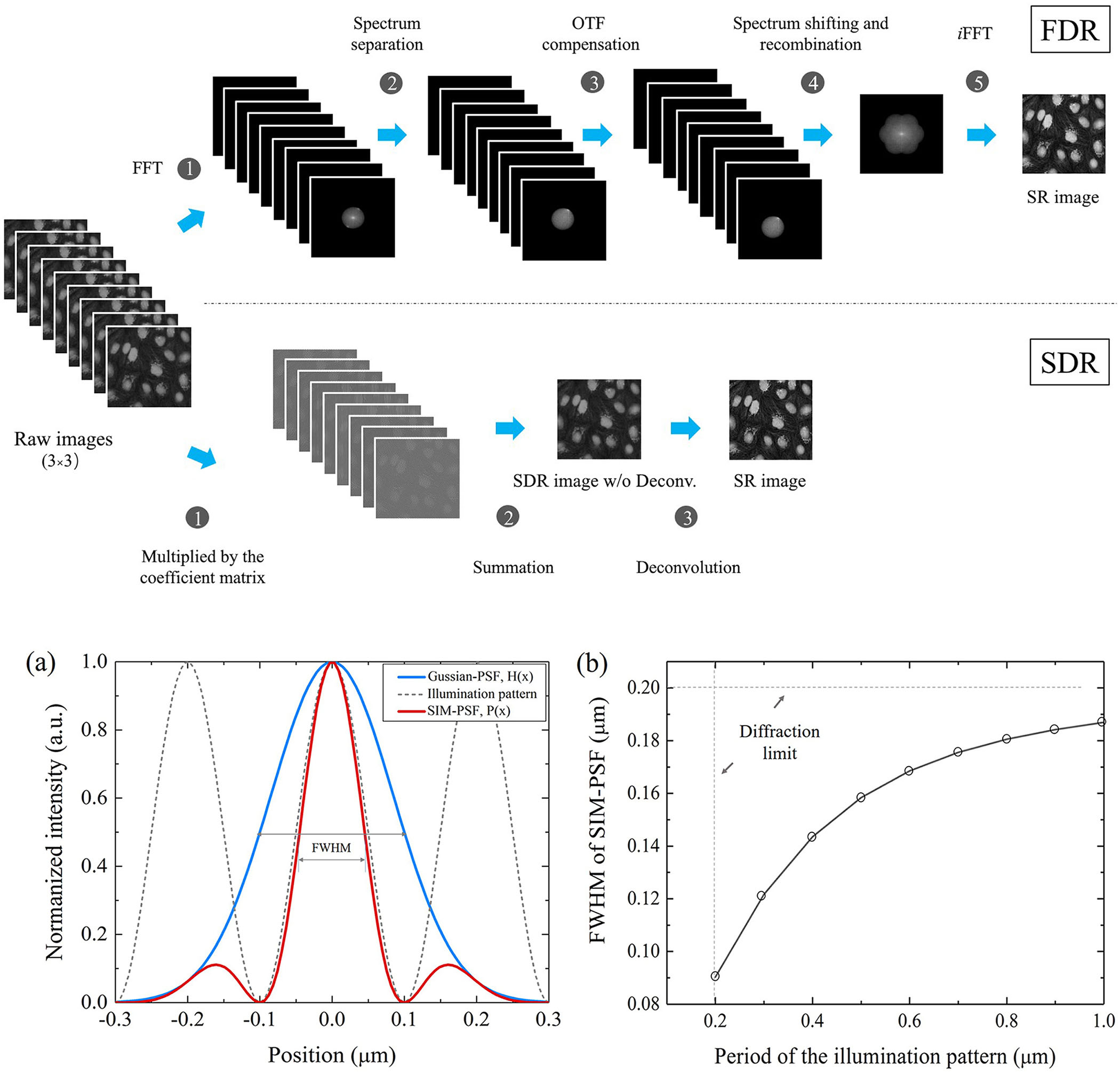

The concept and simple implementation for SDR-SIM. (Image by XIOM)
Optical microscopy is widely used in biological and medical research, but it's resolution is subject to the Abbe diffraction limit and cannot meet the requirement of resolving organism structures inside a cell. The super-resolution (SR) microscopy that emerged in recent years can beat the Abbe diffraction limit and achieve tens of nanometers in resolution. Among which, structured illumination microscopy (SIM) outperforms the most.
However, SIM routinely performs image reconstruction in the frequency domain using an approach termed frequency-domain reconstruction (FDR). Due to multiple Fourier transforms between the spatial and frequency domains, SIM suffers from low reconstruction speed, significantly constraining its applications in real-time, dynamic imaging.
Recently, a research team led by Prof. YAO Baoli from the Xi'an Institute of Optics and Precision Mechanics (XIOPM) of the Chinese Academy of Sciences (CAS) developed a new pipeline for SIM image reconstruction, termed spatial domain reconstruction (SDR), and thus addressed the challenge to SIM.
According to the researchers, SDR is intrinsically simpler than FDR, it does not require Fourier transforms, and the theory predicts it to be a rapid image reconstruction method.
Results show that SDR reconstructs a super-resolution image 7-fold faster than FDR, producing images equal to FDR or the widely-used FairSIM. With SDR, the researchers can real-time track two adjacent nanometer beads with super-resolution. This work was recently published in IEEE Photonics Journal.
The two components of the scheme improve the speed and of image quality generated by SDR. The method is elegant, simple, produces images rapidly, and is therefore ideal for live-cell imaging.

86-10-68597521 (day)
86-10-68597289 (night)

52 Sanlihe Rd., Xicheng District,
Beijing, China (100864)

